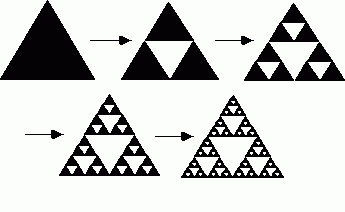Is there anything that shouts “mathematical beauty!” quite like fractals? Fractals are a core pillar of how mathematicians and educators sell math to the public. That makes sense — they really are beautiful in a way that is both visual and intellectually pleasing.
In fact, just a few hours ago I showed this image to my 4th Graders, and I got exactly the “ooohs” and “ahhs” I was hoping for.

The name associated most strongly with fractals is Benoit Mandelbrot’s. Mathematician, visionary, Jewish WW2 refugee, early adopter of computational visualizations, really a very cool person, and discoverer of the Mandelbrot Set. He seems likely to join that canon of Great Mathematicians. (There is such a canon, right?)
Plus, there is an awesome song about him:
And it was only since I’ve started reading more about finance that I realized there was a part of the story that wasn’t being told. Because while there is no denying the beauty of fractals, Mandelbrot’s study of fractals is caught up in the “wild randomness” that he sees in financial markets.
Just to be clear, I’m not saying that this is some sort of big secret. Mandelbrot wrote and spoke frequently about this, and I came across this nearly immediately while studying finance. Because within finance, Mandelbrot emerges as a critic of the sort of quantitative financial engineering that I’m trying my best to understand.
(Shoutout, Nassim Nicholas Taleb.)
The sort of financial models I read about in textbooks all represent the movement of a stock as a kind of random walk, weighted by certain probabilities. So IBM may be more likely to go up or go down, but essentially its price at a given time has to do with how the stock travels through this field of uncertainty — and it is moving randomly. Maybe its price is more likely to rise than fall, but still it’s governed by the same laws as coin flips.
In other words, the value of IBM follows a normal distribution, i.e. the conventional bell curve.
That’s how most quants (apparently) think about finance, but Mandelbrot thought this was a big mistake. He thought the markets were governed by wild randomness, a propensity to run towards the extremes. Here is a piece where Mandelbrot (co-written with Taleb) describes the difference between his model and the conventional one:
These two models correspond to two mutually exclusive types of randomness: mild or Gaussian on the one hand, and wild, fractal or “scalable power laws” on the other. Measurements that exhibit mild randomness are suitable for treatment by the bell curve or Gaussian models, whereas those that are susceptible to wild randomness can only be expressed accurately using a fractal scale.
I’m not quite ready to try to describe what he means by “fractal scale.”
Does it mean anything that the financial side of Mandelbrot’s work is less often shared with students and the public? Maybe not. It certainly doesn’t exhibit the same gut-punch beauty as his images, and finance is probably not the quickest way to gain an appreciation for fractals.
And yet…so often, mathematicians and educators are eager to emphasize the beauty of mathematics. And I agree — math can be beautiful! But it doesn’t seem quite right to say that mathematicians simply chase beauty. Mandelbrot wouldn’t have studied fractals if he wasn’t trying to model financial data, and the story of how math at all levels is entangled with finance is deeply undertold.





